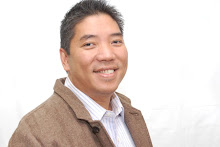By Ambeth Ocampo
Philippine Daily Inquirer
First Posted 02:05:00 11/05/2008
There is a splendid exhibit going on at the Presidio of San Francisco, a former military base very much like Clark, Subic and Camp John Hay that is now undergoing conversion into a modern space for civilian use. The exhibit, “War and Dissent: The U.S. in the Philippines 1898-1915,” curated by Randolph Delehanty, PhD (Harvard), explores the little known period of our shared history that is now known as the Philippine-American War.
It is a forgotten war, not fully explained in both American and Philippine textbooks because when George Dewey and his ships blasted the floating wooden antiques that comprised the Spanish fleet in Manila Bay on May 1, 1898, that battle marked the first shot in the Spanish-American War. We must remember that the US was interfering in the way Spain was running neighboring Spanish Cuba, which like the Philippines had people fighting for their independence. When the American ship Maine exploded in Havana, the accident was used as an excuse for the US to declare war against Spain. The first shot was not fired anywhere near Washington or Madrid, it was heard half the world away in Manila Bay.
After his victory in Manila Bay, Dewey held Manila hostage from the sea; he didn’t have land troops to take and occupy the city. So to keep the pressure on the Spaniards holed up in Intramuros, Emilio Aguinaldo was brought back to resume the Philippine Revolution. He was led to believe that the US, which had fought and won her independence from Britain, was helping Filipinos win theirs, too.
Aguinaldo was to be sadly disappointed. After his return to the Philippines from Hong Kong in late May 1898 on board a US vessel, he resumed the struggle for freedom. On June 12, 1898, in his home in Kawit, Cavite, the Filipinos made their declaration of independence from Spain. Dewey did not attend the party, as he had been instructed by Washington not to make any promises to the Filipinos or recognize their independence in any way.
On Aug. 13, 1898, Dewey bombarded Fort San Antonio Abad (inside the present Central Bank complex along Roxas Boulevard) and the Spaniards, in accordance with a secret agreement, surrendered to the US, not to the Philippines and the Filipinos.
In the evening of Feb. 4, 1899, a sentry named Grayson in a blockhouse in Sta. Mesa shot and killed a Filipino whose name is forever lost to history. That shot began what used to be called the “Philippine Insurrection” because it was convenient for the US not to recognize the First Philippine Republic established in Malolos earlier in the year. To refer to the “insurrection” as a war would have been tantamount to recognizing that the Philippines was already a free and independent nation.
In 1998, the Library of Congress changed its bibliographic classification and changed “Philippine Insurrection” to “Philippine-American War.” That simple change in words significantly changes the whole way in which we see our past, understand our present, and see the future.
Over two decades ago, when I first wrote about the Philippine-American War using as illustrations gory pictures of dead Filipinos in the trenches, I received hate mail branding me as “anti-American” and a “leftist” and a “communist.” Historical memory is short in the Philippines, leading someone to write, “Don’t blame the US if they don’t come back to liberate us as they did from the Japanese in 1945.”
These critics didn’t even know that I used American sources for my articles, mostly materials from the anti-imperialist league—including Mark Twain—that tried to remind Americans against the expansionist policies of Presidents McKinley and Roosevelt. These materials were sourced from the New York Public Library, but that did not stop the board of censors from banning an anti-bases documentary where I appeared on camera to provide historical context. (I have only appeared on film twice in my life and both were given an “X” rating and banned, so no producer or director has touched me since.) Fortunately, the world has become a better place, and now that such an exhibition has been made in the US, I hope we can bring it to the Philippines.
The exhibit consists mostly of text and photos, with some artifacts like captured Philippine and Spanish flags, maps, books, letters and diaries. It explores “the little known war in the Philippines from several points of view, including one American soldier’s story, the struggles of the Philippine independence movement, and the experience of the Lopez family [these are Lopezes from Batangas province, related to Rizal, not those from Iloilo province who are now associated with Manila Electric Co. and ABS-CBN Broadcasting]. Furthermore, the exhibit illustrates how US expansion was depicted in political cartoons of the period.”
Thoughtfully provided on tables are i-pods that allow visitors to hear the “voices of dissent: Mark Twain, other members of the Anti-Imperialist League, and the African-American Press.” The exhibit concludes by showing “the rise of the Presidio into a major military installation and the expansion of the US into the Caribbean and Pacific.”
If you are visiting San Francisco or have friends or relatives there, the exhibit runs until Feb. 22, 2009.
* * *
Comments are welcome at aocampo@ateneo.edu.
Tuesday, November 4, 2008
Subscribe to:
Post Comments (Atom)

1 comment:
The first shot of the Phil-Am War happened at the corner of Sociego St. and Arguelles St., not at Sociego and Silencio where they erroneously have the marker. This is evidenced by the orientation of Blockhouse 7 in the background of Grayson's reenactment photo which aligns with Sociego-Arguelles when compared with the known photo of Blockhouse 7 taken from the same direction, plus the distance estimates of Lieut. Whedon and Col. Stotsenburg placed the 100-yard distance from Santol at Sociego-Arguelles. The NHCP needs to transfer the marker/s to Sociego-Arguelles to get this correctly. See here -> http://www.philamwar.com/thefirstshotofthephilamwarwasnotonsociegosilencio.html
Post a Comment